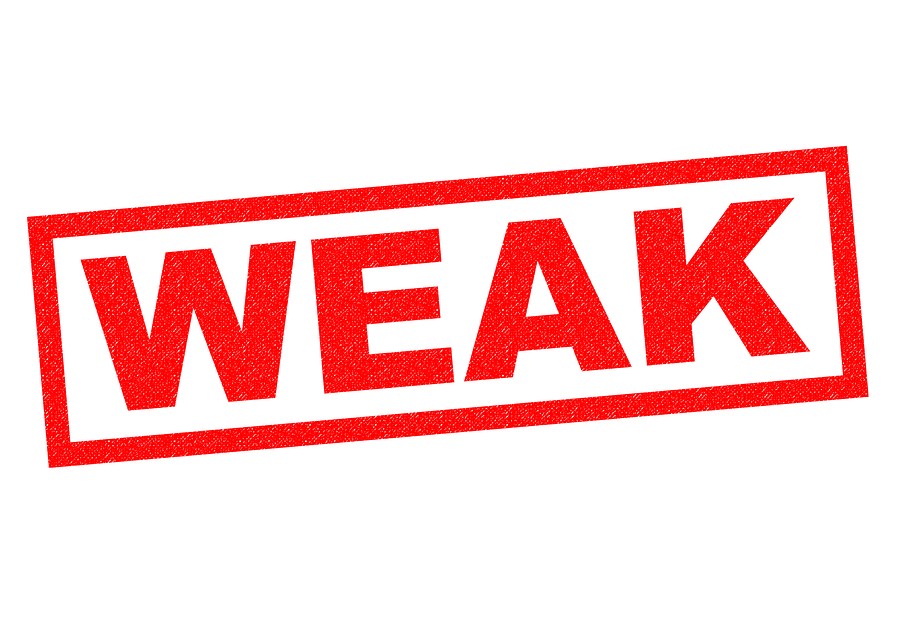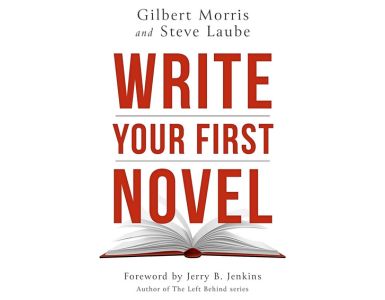The economics of publishing is a bit of a mystery if you are just coming into the business. With all the discussion about indie publishing versus traditional publishing and the claims that writers can become rich if they follow a specific plan, I began to think. Perhaps we should take a quick look at the economics of publishing to see if anyone is profiting significantly. Sorry for those of you who are non-numbers people, but it is critical to understand the infrastructure (i.e., the lifeblood) that keeps your ideas in print.
A detective in a movie says, “Follow the money,” so we shall. But first, a disclaimer. These models are estimates for traditional publishers, based on years of reviewing contracts, profit-and-loss statements, spreadsheets, and royalty statements. Your mileage may vary.
Follow the Money
Let’s start with a paperback book that retails for $17.00 and is projected to sell 10,000 copies the first year.
Expenses per book sold:
| Trade Discount | -$9.35 | 55.0% |
| Print Cost | -$1.50 | 8.8% |
| Royalty to Author | -$1.22 | 7.2% |
| Production | -$1.00 | 5.8% |
| Marketing/Publicity | -$1.00 | 5.8% |
| Publisher Overhead | -$2.00 | 11.8% |
| Total Profit | +$0.93 | 5.5% |
Explanation of Line Items
The trade discount is the discount given to retailers and wholesalers: -$9.35 (I’m using a 55% discount as the average; this number can fluctuate widely, depending on the account purchasing the book.) This leaves +$7.65 for the publisher to work with (also known as the net receipt).
I could have set this up with the following expenses as a percentage of the net receipt, but chose to base these numbers as a percentage of the retail price for simplicity’s sake.
Print cost: $1.50 (based on the cost to print ten thousand books at 240 pages in length; includes freight to the warehouse). Prices fluctuate, depending on the printer, paper availability, type of paper stock, and the number of books printed in a single printing, among other factors. If you were to use print-on-demand, each book would cost approximately $3.88 for a 240-page book, excluding freight (calculated using a chart from Kindle Direct Publishing as of September 2025).
Royalty to author: $1.22 (based on a 16% of net receipts royalty rate. On contracts that use a 7.5% of retail royalty, this number would be $1.275). Note that this scenario does not account for any upfront advance dollars paid to the author. If the author was given a $10,000 advance, the monies earned in this column would go toward offsetting that expense.
Production: $1.00. This is where they pay for the editorial work (content, copy, and proofreading edits), cover design, and typesetting. While this is a fixed cost, I’m basing it on the first 10,000 units sold, or approximately $10,000. (This may seem high, but the top-level editors and designers are worth their weight in gold.) Even if all work in this section is done in-house, it is still an expense that must be covered (salaries/benefits).
Marketing/publicity: $1.00. (This is a wild guess that varies from book to book and author to author and where the money is spent. But in general conversations, the publisher will look at a book’s first-year sales projection and plan on $1 per book sold to determine the marketing budget.) This cost also includes any graphic-design work for catalogs, advertisements, banner ads, and other materials. Additionally, please note that the editorial department is often responsible for writing back-cover copy, catalog copy, proofreading advertising, and more.
I intentionally separated sales (see below under overhead) from marketing. They are separate divisions within a publishing house, each with its own budget.
Publisher overhead: $2.00. This is where each book sold contributes to pay for rent and utilities (many publishers still have physical locations, but some staff can work remotely), warehouse, returns of unsold books, sales-team expense, telemarketing, accounting (accounts payable and receivable), legal fees, bad debts, unearned advance write-offs, administration/management, nonbook-related editorial costs, etc.
Six Things to Note
(1) Ebooks only eliminate the print cost. There are still production costs that fall under the publisher’s overhead section.
(2) There is no mention of the cost of returned inventory for unsold books. I lump that into the publisher overhead cost.
(3) Many independent and maverick writers will be thrilled to read this, saying, “Whoopie! I can get rich because I not only keep the royalty, I keep the publisher overhead too!” And there is the rub. If the author can generate the sales and is willing to handle the infrastructure, then indie is a distinct possibility. However, realize that you are entering a business, not a hobby.
(4) Independents must face the fact that there are costs associated with creating a fine product. Nothing gets published for free. Even time costs money. Recently, an article interviewed an author who claimed to have spent only $300 to produce their book. The author obviously did not hire a freelance editor.
(5) Before you look at that 11.8% for the publisher overhead and start railing against the “money-grubbing” evildoers called “publishers,” stop for a moment. Would you say the same thing about a car dealership? Or a dry cleaner? Or a bookstore chain? What about your own business? What about your church? (Gasp! You mean a church has overhead expenses?)
(6) It is not necessarily true that having more books creates less overhead per book. Certainly, there is an economy of scale in some service areas, but we are using generic estimates in this post. One cannot compare Penguin Random House with Teensy Small Press.
Bigger Picture
If we create a cost analysis of the above model, except this time do it on selling the entire print run (multiplying everything by 10,000) we get the following profit and loss projection:
(Paperback book that retails for $17.00 and is projected to sell 10,000 copies the first year. A value of $150,000 at retail.)
Expenses (combined):
| Trade Discount | -$93,500 | 55.0% |
| Print Cost | -$15,000 | 8.8% |
| Royalty to Author | -$12,200 | 7.2% |
| Production | -$10,000 | 5.8% |
| Marketing/Publicity | -$10,000 | 5.8% |
| Publisher Overhead | -$20,000 | 11.8% |
| Total Profit | +$9,300 | 5.5% |
Please note that the model is for the initial printing.
Note that if the author received a $10,000 advance paid before publication, the royalty earnings have been offset, and the author has received an additional $2,200.
On a second printing, there is no longer a cost for cover design, editorial, or typesetting. And even other costs become more efficient. So if a publisher is able to cover their cost on the first printing, then they start making money. Similar efficiencies apply if this were an ebook. This is why a book that remains in print for many years is critical to the success of a publisher.
Go back to that “Production” section. Who gets paid there?
Editorial: $7,000 (again, a variable cost, but if you consider hiring a high-quality content editor, a copy editor, and a proofreader or two, the cost will add up). There can be as many as five or more editorial people involved in the direct editing of a book.
Cover design: $2,000 (Variable. I’ve seen cover designs cost as much as $5,000 and as little as $500.)
Typesetting: $1,000 (Variable. Freelancers used to charge as much as $8 a page, but desktop publishing destroyed that price structure. However, there is still a cost associated with doing this well. Have you purchased an ebook that was formatted incorrectly? This is the place where such an error can be corrected. Many independent authors will do their own typesetting, and it shows.)
But wait! Go back to that “Publisher Overhead” thingy again. Who gets paid out of that stash?
Sales expense: $1,700 (If the publisher uses a commission-based sales company, then this number can vary. If it is in-house, the cost to travel and manage an account properly is still the responsibility of the publisher.)
Warehouse: $1,500 (A wild guess because it is nearly impossible to do a cost-account per book against the cost of maintaining an entire warehouse. Usually, that total cost is simply divided by the number of books in the warehouse.)
Production manager and managing editor: $2,000 ($1k per person per new book published–a wild guess). These individuals are crucial to the smooth operation of a large publishing house. The production person is not only involved in this one title, but also in the inventory management and printing of older titles. If a book (in 4-color) is being printed overseas, several logistics must be managed. The managing editor ensures overall workflow inside the editorial department. In my days at Bethany House as editorial director of nonfiction, I leaned heavily on my managing editor.
Acquisitions expense: $500 (a wild estimate for this contribution). What about all the time the editors spend reading proposals and full manuscript submissions only to have to decline them? That is time not spent on editing contracted books. That expense is part of overhead that does not produce sales.
Administration, legal, accounting, IT, building maintenance, corporate taxes, etc.: $14,500. The money to pay for the rest of the infrastructure has to come from somewhere.
A client of mine, a debut author, visited the headquarters of his new publisher. He said, “I met 35 people who were involved in the management, production, marketing, and sales of my book. I had no idea!” Imagine if he were an indie author. He would have to be all 35 of those people and be an expert in every aspect. That is why a traditional publisher keeps around 80% of the net revenue (approximately 20% going to the author in royalties). Those people have earned their living.
A Risky Business
Back in my days at Bethany House, we contracted a book with full confidence and paid a reasonable advance to acquire it. We spent a judicious amount of money to market the book. After a year, we conducted a profit/loss analysis, and the book showed a loss of $35,000. Ultimately, nobody wanted the book!
There is considerable risk for the publisher if a book does not perform.
I am aware of another situation (not Bethany House and not involving one of our clients) where the advance was $800,000 for three books. All told, the three books sold a combined 100,000 copies. The publisher obviously lost money.
It isn’t always overpaying on advances that creates the problem. The bottom line is sales. No matter how budget-conscious a publisher is, if the book doesn’t sell, the project loses money.
Losses are not always sales-related either. In another situation, a published book and its author were sued. The publisher of that book had to spend legal fees in its defense. The publisher won the case, but spent hundreds of thousands of dollars on the defense.
Losses can also occur if a store doesn’t pay its bills. When Family Christian Stores went bankrupt (twice, in 2015 and 2017), many publishers lost millions of dollars in unpaid invoices. (Authors were affected as well because the royalties were not paid either.)
Never forget that traditional publishing is a business.
[A previous version of this blog was posted in 2019; all the statistics have been updated.]










